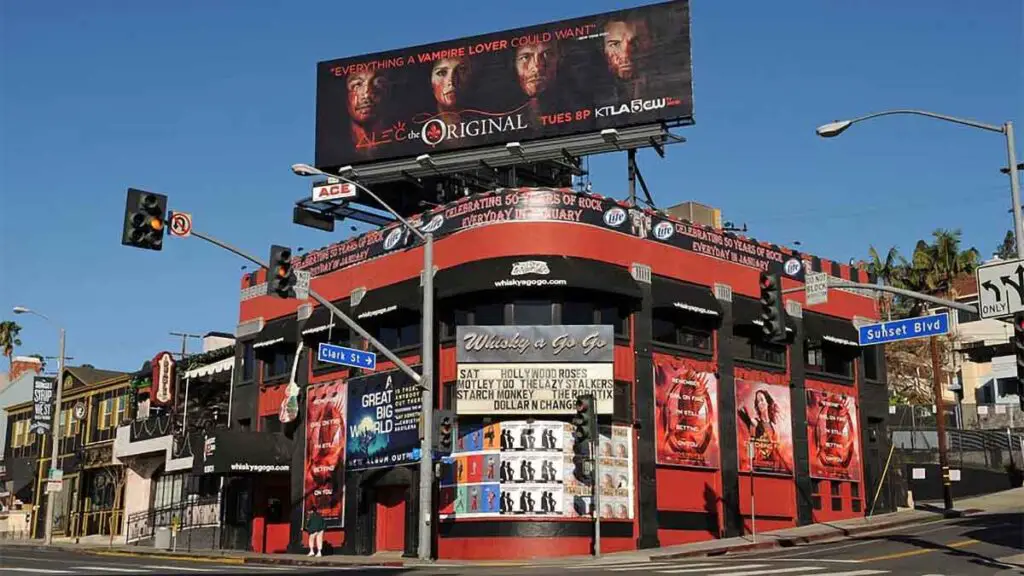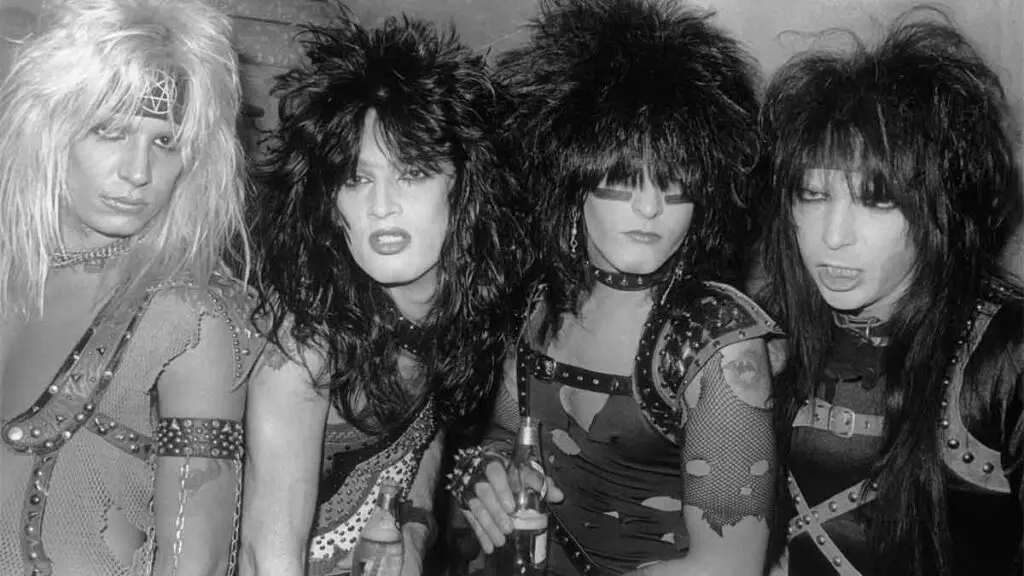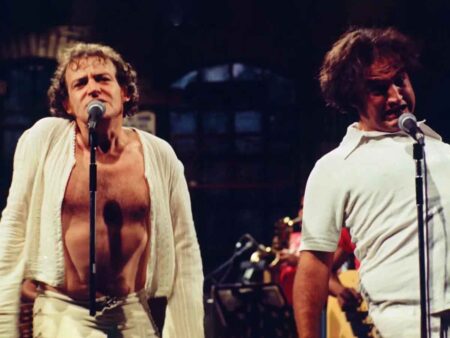Neon lights, leather-clad rockers, and the pounding pulse of distorted guitars—this was the Sunset Strip in the 1980s. On any given night, the sidewalks overflowed with aspiring musicians, die-hard fans, and record executives hunting for the next big thing.
This stretch of Los Angeles became the epicenter of glam metal, a scene built on excess, anthemic choruses, and guitar riffs as big as the hair that defined it. From the gritty club circuit to platinum-selling stardom, bands like Mötley Crüe, Ratt, and Quiet Riot turned the Strip into rock ‘n’ roll’s wildest playground.
Contents
The Clubs That Built the Scene

At the heart of the movement were the legendary clubs: The Whisky a Go Go, The Roxy, and Gazzarri’s. These venues became launching pads for the new wave of glam metal bands, hosting performances that blurred the line between rock ‘n’ roll spectacle and outright debauchery.
The Whisky, which had previously helped break The Doors and Van Halen, became a proving ground for up-and-coming acts. Bands that could land a gig there had a real shot at making waves in the industry. Meanwhile, Gazzarri’s, run by the eccentric Bill Gazzarri, was known for its talent competitions that often put a spotlight on future stars of the genre.
The Strip wasn’t just a collection of venues—it was a living, breathing scene. Bands covered the sidewalks with flyers to promote their shows, while fans in fishnet stockings, spandex, and leather jackets packed the streets, hoping to witness the next big thing in rock.
Mötley Crüe: The Ultimate Sunset Strip Success Story
No band embodied the excess of the Sunset Strip quite like Mötley Crüe. Formed in 1981, the band—Nikki Sixx, Tommy Lee, Vince Neil, and Mick Mars—blended punk’s raw energy with arena-rock ambition. Their 1983 album Shout at the Devil catapulted them to fame, but it was their outrageous lifestyle that made them legends.
Mötley Crüe didn’t just play music—they became the embodiment of rock star excess. Their reputation for hard partying, reckless behavior, and headline-making antics made them just as infamous offstage as they were onstage.
As the Strip’s popularity exploded, so did their success. By the mid-’80s, they had gone from headlining The Whisky to selling out stadiums worldwide, helping to push glam metal into the mainstream.

Ratt, Quiet Riot, and the Battle for Rock Supremacy
Mötley Crüe wasn’t the only band dominating the Sunset Strip. Ratt, led by vocalist Stephen Pearcy, gained momentum with their breakout album Out of the Cellar (1984), which featured the hit “Round and Round.” The competition among bands was fierce, and securing a spot in the club scene often determined whether a band would sink or swim in the industry.
Quiet Riot played a pivotal role in bringing the glam metal sound to mainstream audiences. Their album Metal Health (1983) was the first heavy metal record to reach No. 1 on the Billboard charts, proving that the Strip’s homegrown acts could compete at the highest levels.
The success of songs like “Cum On Feel the Noize” paved the way for other bands to break into the mainstream, attracting major record labels to sign groups straight out of the L.A. club circuit.
With the industry’s attention locked on the Strip, bands like Faster Pussycat, L.A. Guns, and Cinderella soon followed, all tracing their roots back to the same neon-lit sidewalks where it all began.
The Rise and Fall of the Strip’s Dominance
By the late ’80s, glam metal had become one of the biggest genres in the world. Bands from the Strip were filling stadiums, their videos dominated MTV, and their lifestyle of excess became the stuff of legend. However, the same hedonism that fueled their rise also contributed to their downfall.
The early ’90s saw a dramatic shift in rock music. Grunge, with its stripped-down aesthetic and introspective lyrics, exploded onto the scene. Bands like Nirvana and Pearl Jam ushered in a new sound that stood in stark contrast to glam metal’s flashy, party-driven image. Practically overnight, the Sunset Strip’s reigning rock stars found themselves out of step with the new era of music.
Many musicians from the scene admitted they never saw it coming. One day, glam metal ruled the airwaves, and the next, it was being replaced by flannel shirts and angsty anthems. While the mainstream spotlight shifted, the legacy of the Sunset Strip’s glam metal era remained undeniable. Many of the bands continue to tour, and the Strip itself still draws rock fans from around the world, eager to walk the same streets where legends were born.




